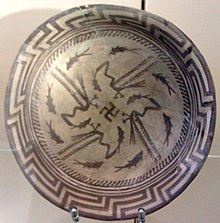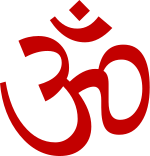The Sacred Science - Part 6
“The Lord dwells in the hearts of all beings, O Arjuna, causing all beings,
by His illusive power, to revolve, as if mounted on a machine.”
Bhagavad Gita 18 : 61
Let’s begin this final part from where we left - namely, the beautiful picture that we selected in the part 5 of this series to illustrate the use of the sphere as a derivation of the circle and a likely representation of both the Center of the World and the World Axis.

The Garden of Earthly Delights by
Hieronymus Bosch (covers)
Note that this derivation is particularly relevant in the case of a rotating circle, where time becomes a factor to consider. Here, the symbolic meaning will be exactly the same for both the circle and the sphere, as the two of them evoke the role of the immutable Principle with regard to the universal manifestation - yet while with the circle it is thecenter, with the sphere it is the axis that serves in that role. See below for a remarkable example of this.
And it should also be noted that when the sphere, terrestrial or celestial, completes its revolution around its axis, there are two points on it which remain fixed: the poles, the axis’ ends or points where it meets the sphere’s surface. That is why the idea of Pole is also an equivalent to the idea of Center.
By the way, the Pole symbolism, sometimes adopting very complex forms, can be found in all traditions - it even has an important role in them. If the majority of the modern scientists have not noticed this, it is just another proof that they lack real understanding of symbols.
We have already seen this to be the case of the swastika, which likewise has never been recognized as a symbol of the Pole but unfortunately received the most fantastic interpretations. In this regard, both considering it a symbol of fire - from the idea that the swastika was a primitive tool for producing it - and seeing it a symbol of the Sun are wrong or, at least, insufficient interpretations.

The ‘Samarra bowl’ with a reconstructed swastika at its center. The fact that it is
drawn on an island-like background and the rotation suggested
by the design clearly indicates a polar origin
(Photo: Wikipedia)
Other interpretations are better in that they perceive in the swastika the idea of movement. However, even this is not enough, as it is not any movement but a rotating motion around an immutable center that takes place - and this fixed point is precisely the essential element referred to by the symbol. In fact, all other meanings attributed to it are derived from that one: the Center sets everything in motion and since motion represents life, the swastika becomes a symbol of life or, more exactly, of the vivifying role of the Principle with regard to the cosmic order. (Guénon: “The Idea of the Center in Ancient Traditions”.)

The swastika
Now if the Swastika is related to the rotation of a sphere, such as the celestial sphere, around its axis, and not anymore to a revolving circle, then the symbol must be considered to be drawn on the equatorial plane, in which case the central point will be the projection of the axis onto that plane, which is perpendicular to it. A symbolic representation of this can be seen clearly in the image below.

The Yggdrasil, or World Ash, served as an image of the world axis. In
Norse mythology, it was the site where Odin found enlightenment.
(from: http://absoluteastronomy.com)
Here we are back to the representation of the earth as the “world egg,” that ancient, universal symbol of the cosmos which cyclically dies and is renewed and is actually very similar to the one of the Phoenix bird that rises from its ashes.
And this representation of the Earth as the “world egg” can be extended to the entire cosmos. For example, according to the 5th Canto of the Srimad-Bhagavatam, a precious, monumental Hindu scripture, the universe lies within a series of spherical shells divided in two by an earth plane called Bhu-mandala. A series of dvipas, or ‘islands’, and oceans make up Bhu-mandala.

In the center of Bhu-mandala is the circular "island" of Jambudvipa, with nine varsha
or subdivisions. These include Bharata-varsha, which can be understood in
one sense as India and in another as the total area inhabited by human
beings. In the center of Jambudvipa stands the cone-shaped
Sumeru Mountain, which represents the world axis and is
surmounted by the city of Brahma, the universal
creator. (by Richard L. Thompson, at
www.unitedindia.com/cosmology.htm)
And this is not all. According to the same scripture, there are innumerable universes, and each one is contained in a spherical shell surrounded by layers of elemental matter that mark the boundary between mundane space and the unlimited spiritual world. See below for a graphic representation of this.

The cosmic shell is called the Brahmanda, or "Brahma egg."
It contains an earth disk or plane - called Bhu-mandala -
that divides it into an upper, heavenly half and a
subterranean half, filled with water.
(by Richard L. Thompson, at
www.unitedindia.com/cosmology.htm)
So far we have only seen the Center as the Principle of everything: but if it is a starting point, it also is a point of arrival. In effect, everything has come from that Center, and everything must ultimately return to it. And since all things only exist because of the Principle, without which they could not possibly subsist, then there must be between it and them a permanent connection, figured by the radios, or spokes, that unite all the points of the circumference to it.

An eight-spoked ‘Wheel of Life’ or Dharma chakra found in Lhasa, Tibet
(Photo: Travel Blog.com)
These radios, on the other hand, can be travelled in the two opposing directions: firstly from the center to the circumference, and then from the circumference to the center. These are complementary-like phases, the first of which is represented by a centrifugal motion and the second by a centripetal motion.
For their part, these two phases can be compared to those of breathing, according to a symbolism frequently referred to by the Hindu doctrines, and - through a not less remarkable analogy - with the physiological function of the heart: in effect, starting from it, the blood spreads out through the body giving it life and then returns to the heart, which in as much as the center of the human body entirely corresponds to the idea which, in a general way, we must make of the Center in the plenitude of its signification. (Guénon: “The Idea of the Center in Ancient Traditions”.)
There are other important aspects with regard to all this that we cannot expound here for lack of space; however, we can still mention that the Center is not only the Principle but also the End of all things; it is, according to a well-known symbolism, the Alpha and the Omega. Still better, it is the principle, the middle and the end; and these three aspects are represented by the three elements of the monosyllable AUM, which by virtue of one the most amazing concordances, is common to both the ancient Hindu tradition and the Christian medieval esotericism: in both cases, a symbol of the Word - the true and real “Center of the World” to which all beings, who depend on their Principle in all that they are, aspire - either consciously or unconsciously - to return.
Thank you,
Luis Miguel Goitizolo

The Sacred Sylabble AUM
(Photo: Wikipedia)